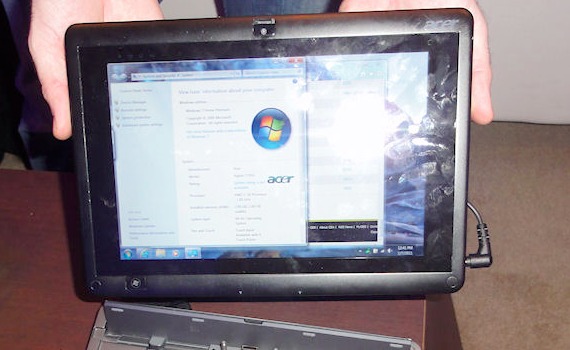AMD's Fusion platform is gaining a few backers among computer manufacturers for bringing solid performance and graphics to thin and light laptops without having to sacrifice too much battery life. But as you probably have already noticed, tablets are the rising stars of the market and the Sunnyvale chip designer wants as piece of the action.
To that end the company recently showed off a low-power 5W version of their C-50 APU. The dual-core chip had been previously announced as a netbook part with a TDP of 9W, which is comparable to Intel’s Atom N550 (8.5W), only the C-50 comes with built-in Radeon HD graphics. AMD was able to cut back on power consumption by removing some of the capabilities of the memory controller - including support for higher capacities - and trimming the I/O capabilities to one port of each type. But the low-power C-50 APU will reportedly perform identically to its full-fledged counterpart.

According to X-bit Labs, Acer will be the first OEM to get its hands on the tweaked silicon for use in an upcoming Windows-based tablet, and it remains to be seen if other manufacturers will follow. Even 5W is still rather high for tablets but this might serve as a temporary solution until AMD's tablet specific (code-named Wichita) chips hit the scene sometime in 2012. Whether the x86 architecture catches on in the tablet market is another question.
https://www.techspot.com/news/42223-amd-shows-low-power-c-50-fusion-chip-for-tablets.html